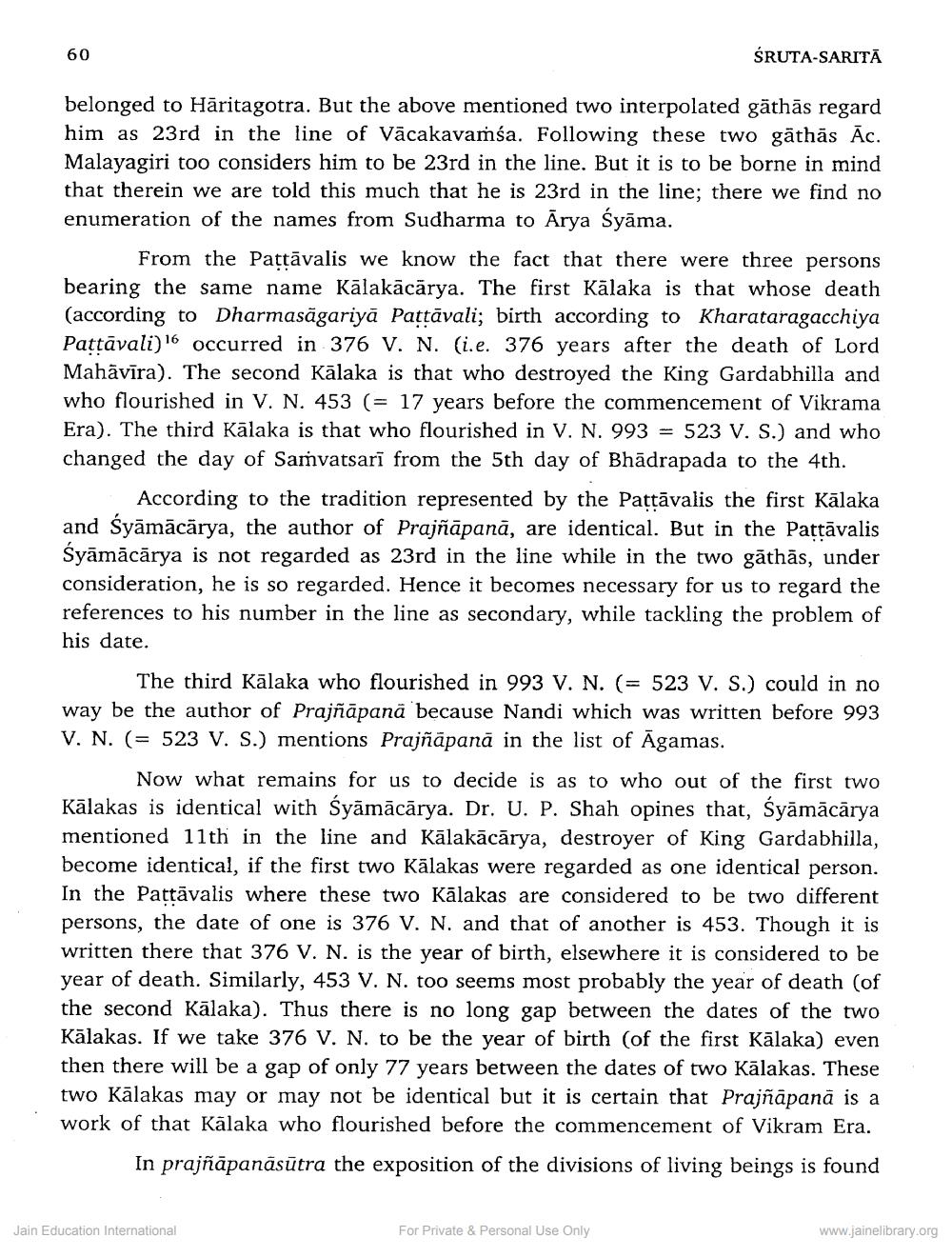________________
60
ŚRUTA-SARITĀ
belonged to Hāritagotra. But the above mentioned two interpolated gathās regard him as 23rd in the line of Vācakavamsa. Following these two gathās Āc. Malayagiri too considers him to be 23rd in the line. But it is to be borne in mind that therein we are told this much that he is 23rd in the line; there we find no enumeration of the names from Sudharma to Arya Śyāma.
From the Pattāvalis we know the fact that there were three persons bearing the same name Kālakācārya. The first Kālaka is that whose death (according to Dharmasāgariyā Pattāvali; birth according to Kharataragacchiya Pattavali) 16 occurred in 376 V. N. (i.e. 376 years after the death of Lord Mahāvīra). The second Kālaka is that who destroyed the King Gardabhilla and who flourished in V. N. 453 (= 17 years before the commencement of Vikrama Era). The third Kālaka is that who flourished in V. N. 993 = 523 V. S.) and who changed the day of Samvatsarī from the 5th day of Bhādrapada to the 4th.
According to the tradition represented by the Pattāvalis the first Kālaka and Syāmācārya, the author of Prajñāpanā, are identical. But in the Pattāvalis Syāmācārya is not regarded as 23rd in the line while in the two gāthās, under consideration, he is so regarded. Hence it becomes necessary for us references to his number in the line as secondary, while tackling the problem of his date.
The third Kālaka who flourished in 993 V. N. (= 523 V. S.) could in no way be the author of Prajñāpanā because Nandi which was written before 993 V. N. (= 523 V. S.) mentions Prajñāpanā in the list of Āgamas.
Now what remains for us to decide is as to who out of the first two Kālakas is identical with Syāmācārya. Dr. U. P. Shah opines that, Syāmācārya mentioned 11th in the line and Kālakācārya, destroyer of King Gardabhilla, become identical, if the first two Kālakas were regarded as one identical person. In the Pattāvalis where these two Kālakas are considered to be two different persons, the date of one is 376 V. N. and that of another is 453. Though it is written there that 376 V. N. is the year of birth, elsewhere it is considered to be year of death. Similarly, 453 V. N. too seems most probably the year of death (of the second Kālaka). Thus there is no long gap between the dates of the two Kālakas. If we take 376 V. N. to be the year of birth (of the first Kālaka) even then there will be a gap of only 77 years between the dates of two Kālakas. These two Kālakas may or may not be identical but it is certain that Praiña work of that Kālaka who flourished before the commencement of Vikram Era.
In prajñāpanāsūtra the exposition of the divisions of living beings is found
Jain Education International
For Private & Personal Use Only
www.jainelibrary.org




